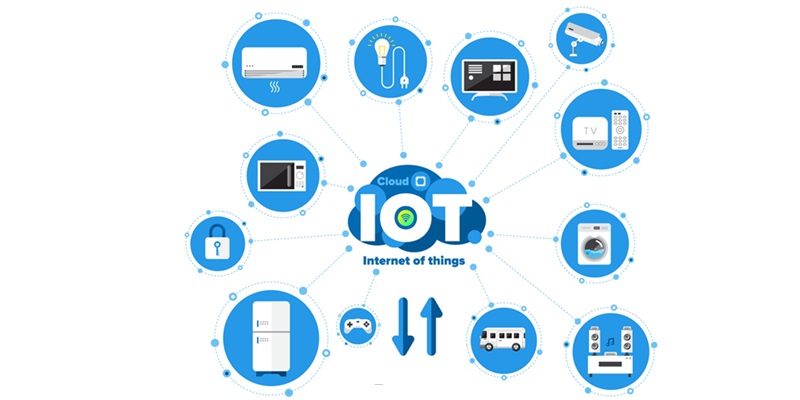In today’s fast-paced world, businesses are constantly seeking innovative solutions to improve efficiency and streamline their operations. One such solution that has gained significant momentum in recent years is IoT remote monitoring. This technology allows companies to harness the power of the Internet of Things (IoT) to monitor and manage their assets, processes, and infrastructure remotely. In this article, we will explore the benefits, predictions, features, impact, applications, and future prospects of IoT remote monitoring.
Benefits of IoT Remote Monitoring Software
IoT remote monitoring software offers a plethora of benefits for businesses. By leveraging this technology, companies can save valuable time and resources by promptly detecting potential problems and resolving them before they escalate. This proactive approach not only improves operational efficiency but also reduces downtime and maintenance costs. Additionally, remote monitoring allows for real-time data analysis, predictive maintenance, and enhanced asset management, providing companies with valuable insights and actionable intelligence.
Predictions for the Expansion of IoT
The IoT landscape is constantly evolving, and its growth shows no signs of slowing down. According to an analyst at Gartner, the Internet of Things is expected to expand at an astonishing rate of thirty percent in the coming years. This prediction highlights the immense potential of IoT remote monitoring in transforming industries and revolutionizing business models.
Features of IoT Platforms for Remote Monitoring
IoT platforms designed for remote monitoring are equipped with intelligent functions that facilitate various tasks. These platforms can handle multiple IoT devices, perform real-time analysis of data, enable predictive management, and enhance overall asset management. The combination of these features empowers businesses to make data-driven decisions, optimize processes, and drive operational excellence.
Impact of IoT on Industries and Business Models
The Internet of Things has the capacity to reshape industries and unlock tremendous value. By digitizing internal operations and leveraging IoT remote monitoring, companies can unlock efficiency gains, improve productivity, and create new revenue streams. This technology has extensive applications across various sectors, including agriculture, airline and aircraft maintenance, factory operation and production, restaurant business, and the pharmaceutical industry, to name a few.
Applications of Remote Monitoring with IoT
IoT-enabled remote monitoring finds applications in a wide array of scenarios. For instance, it can be used to track events or changes in buildings, bridges, and other critical infrastructure. Furthermore, it plays a pivotal role in improving workplace safety by quickly detecting power outages, increasing lighting in high-risk areas, and responding to changing conditions. Cities and municipalities can leverage IoT remote monitoring to automatically adjust illumination in locations with low visibility or high crime rates, thus improving overall public safety.
Enhancing City Infrastructure with IoT Remote Monitoring
The integration of IoT remote monitoring technology in city infrastructure offers numerous advantages. It enables municipalities to monitor and manage critical systems, such as transportation networks, energy grids, and waste management, in real time. This proactive approach can enhance efficiency, reduce costs, and improve the overall quality of life for residents.
Optimizing Business Processes with IoT Remote Monitoring
IoT remote monitoring has the potential to optimize business processes across various industries. In agriculture, it can facilitate precision farming, optimizing water usage, fertilizer distribution, and monitoring crop health. In the airline and aircraft maintenance sector, remote monitoring enables predictive maintenance, reducing downtime and improving safety. Additionally, it can streamline factory operations and production by providing real-time insights into equipment performance and supply chain management. The restaurant business can leverage IoT remote monitoring to monitor food temperature, optimize energy consumption, and enhance food safety. Lastly, in the pharmaceutical industry and healthcare sector, remote monitoring ensures the safe storage and transportation of medicines, tracks patient vital signs, and improves overall patient care.
Future Prospects of Remote Monitoring Technology
The future of remote monitoring technology remains bright, with further integration with innovations such as 5G and blockchain. The advent of 5G networks will enable faster and more reliable data transfer, enhancing the capabilities of IoT remote monitoring. Moreover, the inclusion of remote monitoring in fields like autonomous vehicles, environmental monitoring, and smart cities holds immense potential for driving innovation and improving the quality of life.
In conclusion, IoT remote monitoring is revolutionizing industries and streamlining operations. Its ability to detect and address issues promptly, enable real-time analysis, and enhance asset management provides businesses with a competitive advantage. With the expanding landscape of IoT and the integration of cutting-edge technologies, the future of remote monitoring technology is poised to deliver even greater value, paving the way for smarter, more efficient industries, and a connected world.

